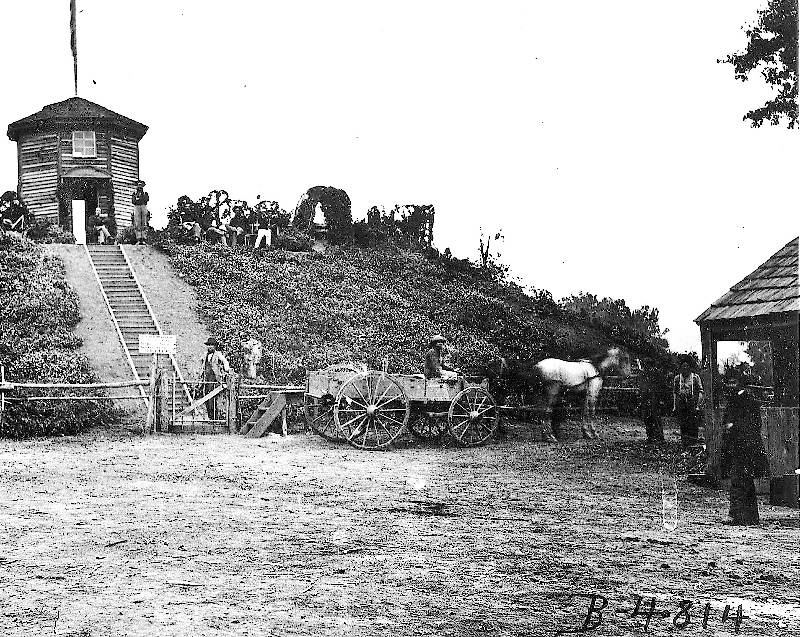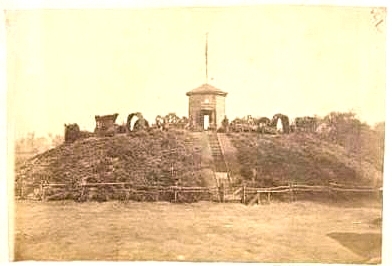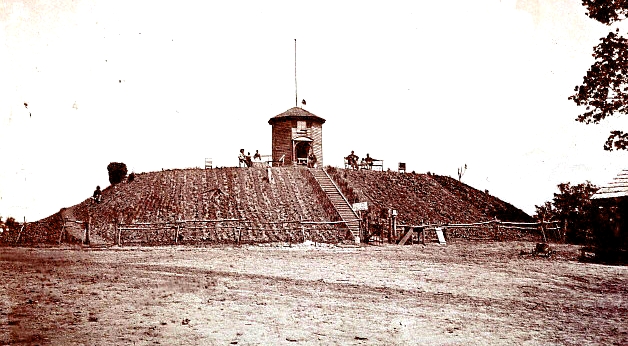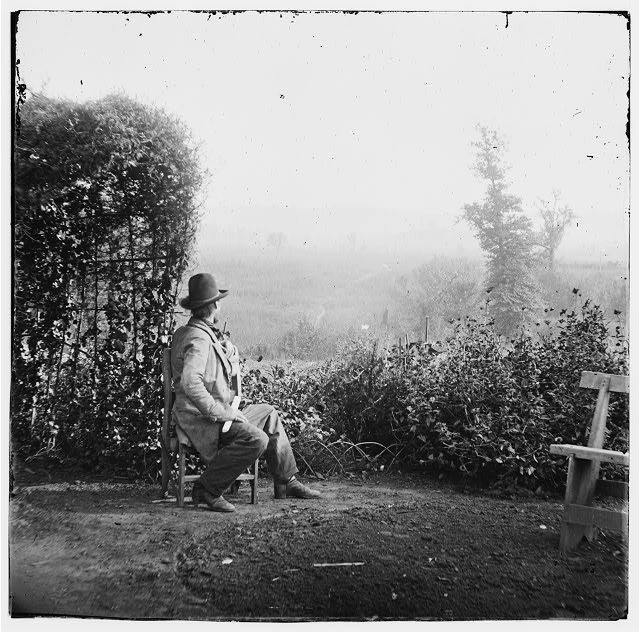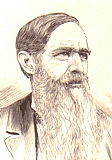CITICO MOUND
Citico Mound was one of the most interesting places excavated by Mr. Moore. More than a hundred burials were located. The mound was originally 110 by 145 feet in size and it was more than 15 feet high. Just south of it may be seen the place where the dirt was patiently excavated by the Indians with wooden or flint spaces and stone hoes and carried in baskets to the top. The mound was built upon the remains of an older settlement. Fifteen feet below the original top surface of the mound is a bed of ashes and camp débris four feet thick, and a recent excavation unvovered a set of post holes on which rested a dwelling before the mound was built.
Almost all the burials uncovered by Mr. Moore were in a lower mound nearer the Tennessee River, now on the west side of Riverside Drive. Many shell gorgets, earrings, bone instruments, flint knives, arrow and spearheads and stone celts were here. Numbers of pipes representing birds and a child's rattle of tortoise shell, with pebbles inside, were other items of interest. Mr. Moore comments on the number of shell gorgets found in the graves of children. Some articles of copper and an iron celt, of Spanish make, were probably secured from De Soto.
In 1914 the greater portion of Citico Mound was leveled to make Riverside Drive. During the course of the work, C. K. Peacock saved from the steam shovel a beautiful piece of pottery, painted red in Mexican design. It is a handsome four-cornered bowl which would do credit to the makers of Rookwaood or other modern pottery. W. E. Myer, of Carthage, Tenn., secured a copper ornament in the shape of a crown. H. F. Wenning also secured valuable specimens.
It is unfortunate that a monument as interesting as Citico Mound should have been sacrificed to the building of a road. The mounds should be preserved whenever possbile. When entered for scientific purposes and research, they should be resotred to their original shape.
The History of Hamilton County and Chattanooga, Tennessee, Volume 1, by Zella Armstrong, Chattanooga 1931 pp 12-13
